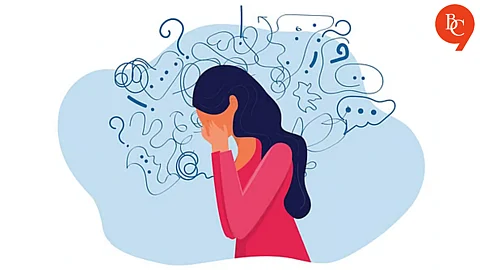

More adults, especially women, are being diagnosed with ADHD in their 20s, 30s, and even 40s—and many are discovering that they've lived their whole lives undiagnosed.
Social media is flooded with relatable ADHD content, therapists are seeing a surge in late diagnoses, and for many adults, getting diagnosed is bringing clarity to years of self-doubt, shame, and confusion.
So, what’s driving this rise? Is ADHD truly more common today—or are we finally looking in the right places?
The Numbers Speak: A Steep Rise in Late Diagnoses
According to mental health research globally, ADHD diagnoses in adults have increased significantly over the past decade. While childhood ADHD diagnoses are still more common, adults—particularly women—are catching up.
In India, though awareness is still growing, urban therapists report a rising number of adult clients presenting with symptoms like:
Chronic procrastination
Emotional dysregulation
Inability to finish tasks
Brain fog and forgetfulness
Difficulty managing time and routines
Many of these adults spent their youth mislabelled as “lazy,” “disorganized,” “overly sensitive,” or “bad at planning”—when in reality, their brain was simply wired differently.
Why Was It Missed for So Long?
There are a few key reasons ADHD often goes undiagnosed until adulthood:
1. Symptoms Look Different in Adults
Adult ADHD doesn't always look like hyperactivity. Instead, it shows up as:
Constant mental chatter
Switching between tasks without finishing any
Trouble focusing in meetings
Losing interest quickly in hobbies or jobs
Interrupting others in conversations
Because these don’t always match the classic school-age symptoms, they go unnoticed.
2. Masking and Coping Mechanisms
Many adults—especially women—learn to “mask” their symptoms. They become overachievers, people-pleasers, or hyper-organized to overcompensate. But beneath the surface, there’s often:
Burnout
Anxiety
Low self-esteem
Imposter syndrome
3. Gender Bias in Diagnosis
Boys with hyperactivity are more likely to be flagged early. Girls—whose symptoms tend to be more internal (daydreaming, sensitivity, emotional overwhelm)—are often overlooked.
ADHD Is More Than Just ‘Bad Focus’
Contrary to stereotypes, ADHD isn’t just about attention—it affects executive functioning, emotional regulation, and even physical energy levels.
Adults with ADHD often struggle with:
Maintaining routines
Handling paperwork or bills
Keeping relationships balanced
Managing career consistency
Sensory overload or emotional outbursts
And the emotional fallout? Guilt, anxiety, and years of feeling “not good enough.”
To Medicate or Not to Medicate?
Once diagnosed, adults face the big question: What now?
Some opt for medication (like stimulants) that improve focus and reduce overwhelm.
Others find relief through therapy, ADHD coaching, time-blocking techniques, or mindfulness practices.
A combination of strategies—along with self-compassion—often yields the best results.
But one thing is clear: Diagnosis itself is often a relief. It puts a name to lifelong struggles and helps people forgive their past selves.
How to Support Someone With Adult ADHD
If someone close to you is navigating a diagnosis, here’s how you can support them:
Don’t say “Everyone gets distracted sometimes”—ADHD is deeper.
Be patient with delays or emotional swings.
Encourage therapy or professional help—don’t push.
Celebrate their wins, however small.
Offer tools—not judgment (think: planners, reminders, check-ins).
The rise in adult ADHD diagnoses isn’t about a trend. It’s about finally recognising that neurodiversity exists beyond childhood. And that brains don’t all work the same way—and that’s not a flaw, it’s a fact.
In a society obsessed with hustle, productivity, and “getting it all together,” adult ADHD challenges our norms. But it also teaches us something important: Productivity does not equal worth.
Understanding ADHD isn’t just a personal revelation—it’s a cultural one.
